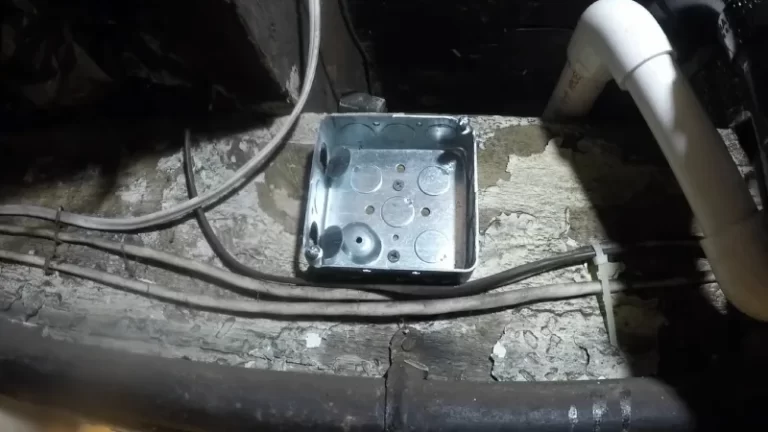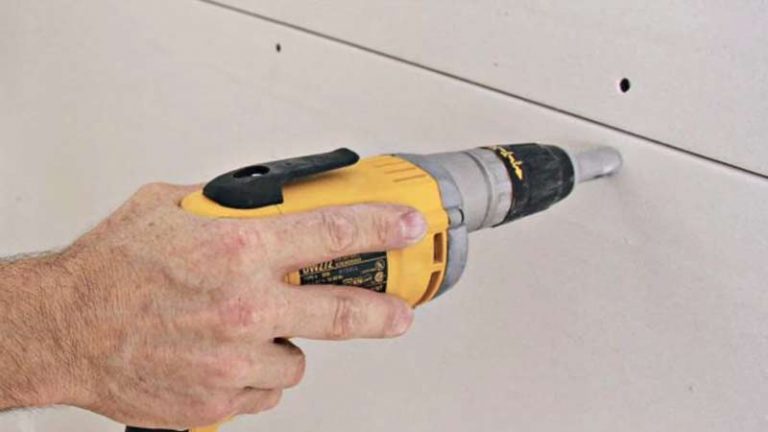Replacing Knob and Tube in Plaster Walls: A Survival Guide
Owning a historic home is a unique privilege, filled with charming details and a sense of connection to the past. But beneath the beautiful plasterwork and classic architecture often lies an outdated secret: knob and tube wiring.
This early electrical system, while innovative for its time, now represents a significant challenge for modern homeowners. Tackling its replacement is a crucial step towards ensuring your home’s safety and functionality for years to come.
You'll Learn About
Why Replacing Knob and Tube Wiring is Non-Negotiable
Knob and tube (K&T) wiring was the standard from the 1880s to the 1940s. It consists of single copper conductors insulated with rubberized cloth, running through ceramic tubes for protection and supported by ceramic knobs. While it may have served its purpose decades ago, it poses several serious risks in a modern home.
The most significant danger is the lack of a ground wire. Modern appliances and electronics are designed with a third prong for grounding, which protects against electrical shock and fire in case of a fault. K&T systems simply don’t have this essential safety feature. Furthermore, the original rubber and cloth insulation becomes brittle over time, cracking and flaking off to expose live wires, creating a severe cloth wiring vs knob and tube fire hazard.
Another major issue is its incompatibility with modern insulation. K&T wiring was designed to dissipate heat into open air cavities within walls. When insulation is blown into these cavities, it smothers the wires, trapping heat and creating a tinderbox scenario. Many insurance companies now refuse to cover homes with active K&T wiring or charge exorbitant premiums due to these well-documented risks.
The Plaster Wall Challenge: A Delicate Operation
Replacing any wiring is a significant job, but doing so in a house with plaster and lath walls adds a substantial layer of complexity. Unlike modern drywall, which can be easily cut and patched, plaster is a far more delicate and messy material. It’s brittle, prone to cracking, and creates a tremendous amount of fine dust when disturbed.
An inexperienced electrician might suggest gutting the walls entirely, a costly and destructive approach that sacrifices the historic character of your home. However, with the right strategy and expertise, it’s possible to rewire your house while preserving the integrity of your plaster walls. The goal is to be surgical, not destructive.

Strategic Approaches to Replacing K&T in Plaster
A successful rewiring project in a plaster-walled home hinges on a well-thought-out plan. Electricians experienced with older homes typically use a combination of minimally invasive techniques to run new, modern wiring (like Romex NM cable) with the least amount of damage possible.
The “Minimally Invasive” Fishing Method
This is the preferred approach for preserving plaster walls. It involves using attics, basements, and crawlspaces as main arteries to run new cables. From these access points, electricians “fish” the wires through the wall cavities to the desired locations for outlets, switches, and fixtures.
This requires specialized tools like flexible drill bits, fish tapes, and glow rods. Small, strategic holes are cut for new electrical boxes, and wires are carefully pulled through the hidden spaces between studs. This method is meticulous and requires patience, but it keeps wall damage to an absolute minimum.
The “Surgical Cut” Channel Method
In some cases, fishing wires isn’t possible due to fire blocks, cross-bracing within the walls, or complex routing needs. In these situations, a skilled professional will make precise, narrow cuts into the plaster to create channels for the new wiring.
Using tools like an oscillating multi-tool with a diamond blade allows for clean incisions that minimize cracking and collateral damage. Once the new wire is installed, these channels can be expertly patched and skim-coated by a plasterer, making the repair virtually invisible after painting.
When Is a Full Gut Necessary?
While often avoidable, there are times when removing the plaster is the most practical solution. This is typically only recommended if you are already planning a major renovation that involves reconfiguring walls or if the plaster is in extremely poor, unsalvageable condition. This approach provides complete access but is the most expensive and disruptive option.
The Cost of Safety: Budgeting for Your Rewiring Project
Replacing knob and tube wiring is a significant investment, but it’s one that pays dividends in safety, functionality, and home value. The final cost can vary widely based on several factors, including the size of your home, the accessibility of the wiring, and the extent of plaster repair required.
It’s crucial to get multiple quotes from licensed electricians who specialize in older homes. Be wary of unusually low bids, as they may not account for the complexities of working with plaster. Investing in a quality job upfront will save you from costly repairs and headaches down the road. This upgrade can significantly impact your home’s marketability and is a key consideration in understanding if does rewiring a house add value.
| Cost Factor | Description | Estimated Impact on Price |
|---|---|---|
| Home Size (sq. ft.) | Larger homes require more materials (wire, boxes, outlets) and significantly more labor time. | High |
| Accessibility | Homes with accessible attics and unfinished basements are less expensive to rewire than those without clear access points. | High |
| Number of Outlets/Switches | Each new fixture, outlet, or switch adds to the labor and material costs. | Medium |
| Plaster Repair Level | The extent of cutting required and the quality of the subsequent plaster repair will affect the total project cost. | Medium |
| Panel Upgrade | Most K&T replacements necessitate a new, modern circuit breaker panel to handle increased loads, adding to the cost. | Medium |
Finding the Right Professional: Not Just Any Electrician
This is not a job for a novice or a DIY enthusiast. Hiring a licensed and insured electrician with specific, verifiable experience working in older homes with plaster walls is absolutely critical. These professionals understand the unique challenges and possess the specialized tools and techniques to do the job right.
When vetting contractors, ask for references from past clients with similar homes. Inquire about their methods for minimizing plaster damage and how they handle the inevitable dust and debris. A true professional will have a clear plan for containment and cleanup.
Upgrades to Consider While the Walls Are Open
A full rewiring project presents a unique opportunity to make other valuable upgrades to your home’s infrastructure. Since small holes will already be made, consider adding features that will enhance modern living and future-proof your home.
This is the perfect time to add more outlets, install dedicated circuits for high-power appliances, and even hardwire your microwave for a cleaner look and improved safety. You can also run network cabling for better internet connectivity or install wiring for a home security system. Planning these additions alongside the rewire is far more efficient and cost-effective than doing them later.
The Aftermath: Restoring Your Plaster Walls
Once the new wiring is installed and inspected, the final step is repairing the plaster. The electrician’s job is to run the wires; plaster repair is typically handled by a separate specialist unless the electrical contractor offers it as part of their service.
For small holes, a skilled plasterer can create a seamless patch that blends perfectly with the existing wall. For larger channels, it may involve installing a new lath structure before applying new coats of plaster. A final skim coat over the entire repaired area ensures a flawless finish, leaving no trace of the invasive work that was done.
A Worthwhile Investment in Your Home’s Future
Replacing knob and tube wiring in a home with plaster walls is undoubtedly a complex and often costly undertaking. However, it is one of the most important investments you can make in the safety, usability, and value of your historic home.
By approaching the project with a clear strategy, hiring the right professionals, and taking the opportunity to make smart upgrades, you can successfully bring your home’s electrical system into the 21st century while preserving the timeless charm you fell in love with.
Frequently Asked Questions
Will my plaster walls be damaged during the rewiring process?
Experienced electricians will make small, strategically placed holes to fish the new wiring, minimizing damage to your plaster walls. While it’s unrealistic to expect no holes, a skilled electrician can perform the replacement with minimal mess. Any necessary openings can then be professionally repaired by a plasterer.
Do I have to remove all the old knob and tube wiring?
Not all of the old wiring must be physically removed. While all visible knob and tube wiring in accessible areas like unfinished basements and attics should be taken out, the wiring concealed within walls and ceilings can be deactivated and left in place. The crucial step is to ensure the entire old system is disconnected from the power source.
Can I just replace some of the knob and tube wiring?
Partial replacement of knob and tube wiring is not recommended due to safety hazards. To ensure your home is safe, the entire knob and tube system should be deactivated and a modern wiring system installed. Simply replacing a portion of the old wiring does not eliminate the overall risk.
Why is it necessary to replace knob and tube wiring?
Knob and tube wiring, common in homes built before the 1940s, lacks a ground wire, which is a critical safety feature for modern appliances. The insulation on these old wires can become brittle and break down over time, creating a fire hazard. Additionally, many insurance companies will not cover homes with active knob and tube wiring or will charge significantly higher premiums.
What is the average cost to replace knob and tube wiring?
The cost to replace knob and tube wiring can vary significantly based on the size of your home and the accessibility of the wiring. On average, you can expect to pay between $12,000 and $35,000. This cost often includes not only the new wiring but also potential upgrades to your electrical panel and repairs to the plaster walls after the new wires are run.



